Are you curious about what goes into making quality hand wash? We’re here to unveil the secrets! For business owners, understanding these components can be the key to crafting a top-notch product.
With our expertise in hand wash formulation, we bring you reliable and insightful information. Trust us to guide you through the essential raw materials you need.
Here’s a sneak peek at two crucial categories:
- Core Ingredients
- Moisturizing Agents
In this guide, we’ll dive deeper into each raw material, explaining its role and benefits in hand wash production.
Keep reading to discover more!
1. Core Ingredients
Core ingredients are crucial for effective cleansing and gentle skin care in hand wash formulas. They ensure thorough cleaning and sanitizing of hands. Below are typical core ingredients in hand wash formulations:
Surfactants
Surfactants, like sodium laureth sulfate, are the primary cleaning agents in hand wash, typically composed of 90% lipid and 10% protein. This composition enables them to effectively attract and remove dirt and oil, allowing for an easy wash away. Their balanced lipid-protein structure is key to their efficacy, ensuring thorough cleansing without stripping the skin of its natural oils.
Antimicrobial Agents
Ingredients such as triclosan or benzalkonium chloride are included for their germ-killing properties, making the hand wash effective against bacteria and viruses. These agents work at a microscopic level to ensure thorough sanitization, crucial in maintaining hand hygiene. They are especially important in settings where reducing the spread of pathogens is paramount.
Humectants
Glycerin is a common humectant in hand washes. It helps to retain moisture in the skin, preventing dryness after washing. For example, by attracting water from the surrounding environment, glycerin ensures the skin remains hydrated and supple. This makes it an invaluable ingredient in hand wash formulas, particularly for those with dry or sensitive skin.
Emollients
Ingredients like aloe vera or jojoba oil are added for their skin-softening properties. They help to soothe and moisturize the skin, countering the drying effects of surfactants. These emollients provide a protective layer that helps maintain the skin’s natural moisture barrier. Their inclusion in hand washes is essential for preserving skin health, leaving hands feeling soft and nourished after each wash.
Preservatives
Preservatives such as parabens or phenoxyethanol are crucial to prevent the growth of microbes in the product, ensuring it remains safe to use over time. As a cosmetic expert, I always emphasize the importance of preservatives for maintaining the longevity and safety of hand wash products. Their inclusion is a delicate balance, aiming to protect without compromising skin health.
2. Moisturizing Agents
Moisturizing agents in hand wash prevent skin dryness, especially with frequent use. They nourish and protect the skin, balancing cleansing with care. Below are the common moisturizing agents found in hand wash formulations:
Glycerin
A popular humectant, glycerin attracts water to the skin, aiding in hydration and preventing dryness. Its versatility makes it suitable for various skin types, even in small quantities. Glycerin’s ability to draw moisture from the air is why it’s a staple in hand wash formulations. This effectiveness is backed by Sage Journals, noting that a moisturizer with 65.9% glycerin wasn’t sensitizing in tests, indicating its skin-friendly nature.
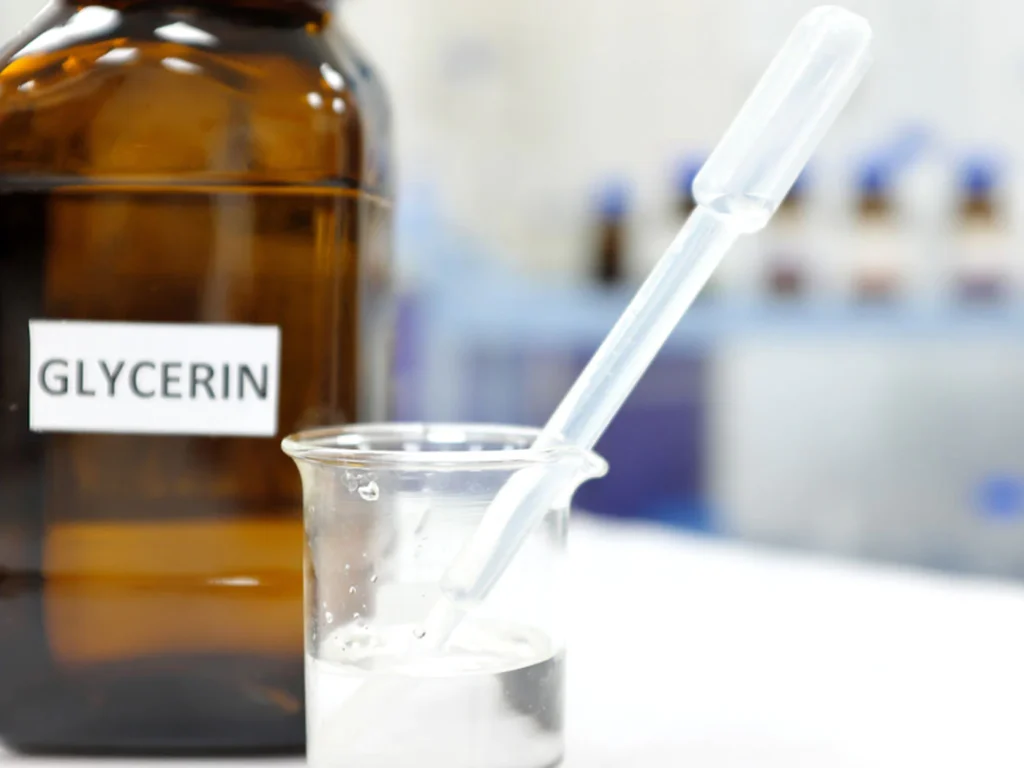
Aloe Vera
Known for its soothing properties, aloe vera not only moisturizes but also helps in healing minor irritations. Its natural, gentle composition makes it ideal for sensitive skin. Aloe Vera’s calming effect is particularly beneficial in hand washes, leaving skin feeling refreshed and soothed. Additionally, its anti-inflammatory qualities can help to reduce skin redness and puffiness.
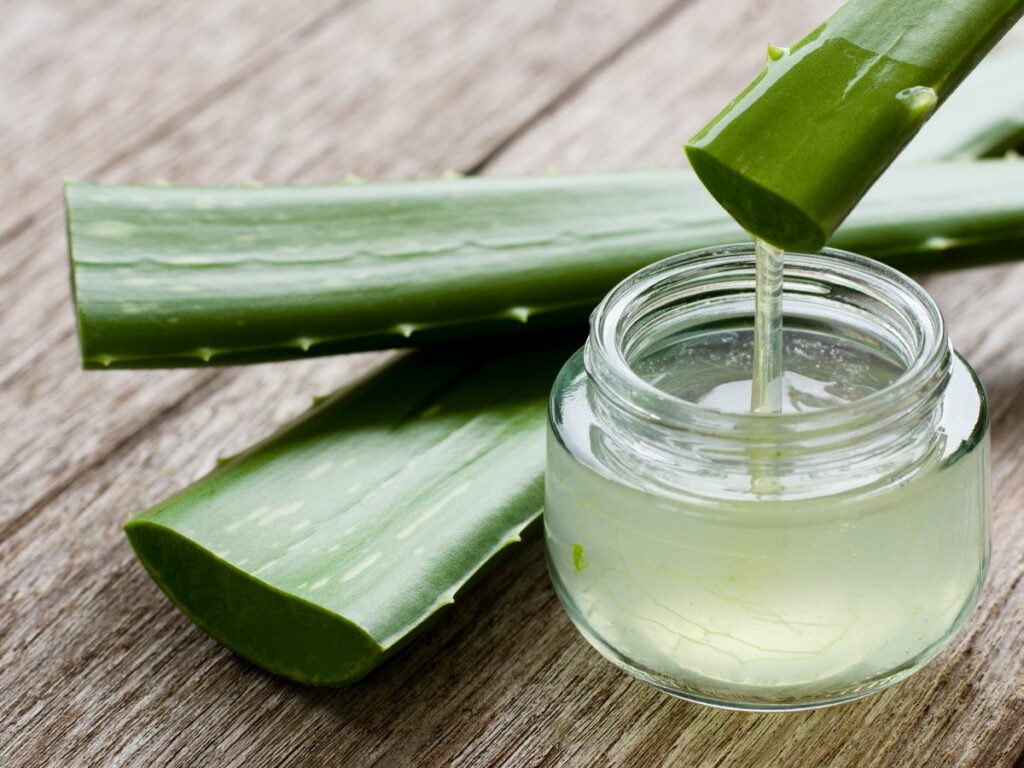
Shea Butter
Rich in vitamins and fatty acids, shea butter is an excellent emollient that deeply nourishes and softens the skin. It creates a smooth barrier that locks in moisture, making it ideal for dry skin. Its luxurious texture adds a touch of richness to hand wash formulations, enhancing the user experience. From my expertise, shea butter’s inclusion often transforms a regular hand wash into a nourishing treat for the skin.
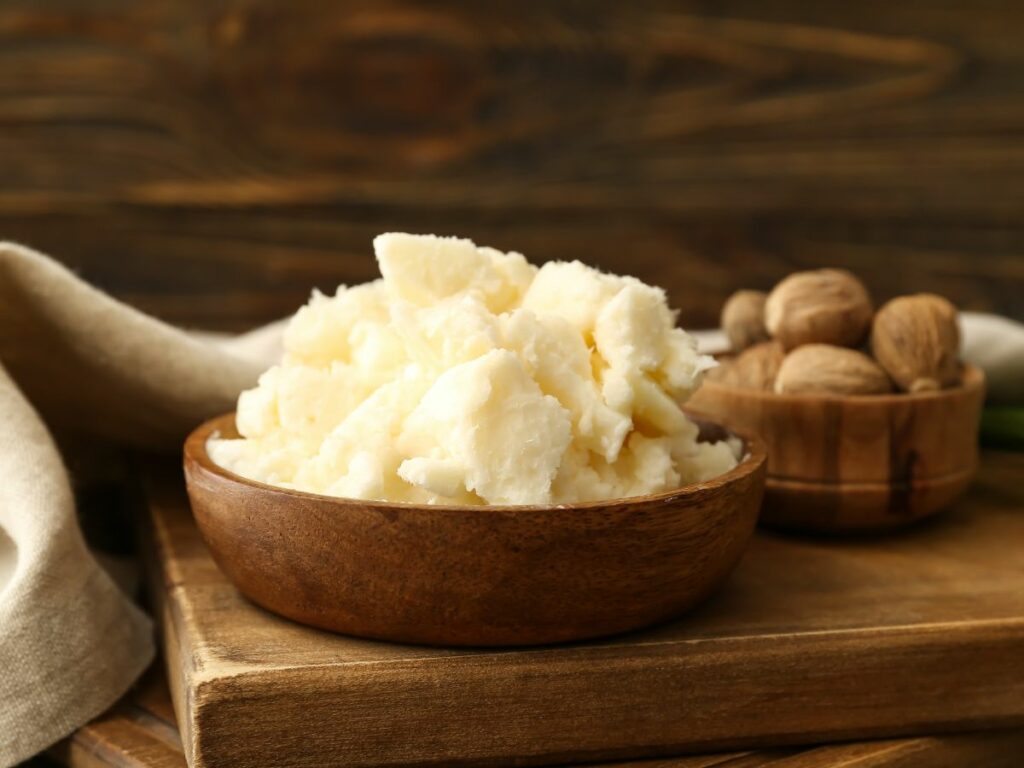
Jojoba Oil
Jojoba oil, ideal for hydrating hand washes, provides long-lasting moisture and improves skin elasticity, thanks to its non-greasy texture and compatibility with skin’s natural oils. Jojoba oil’s natural affinity with skin oils ensures it integrates seamlessly into hand washes, offering deep hydration. TY Cosmetic uses jojoba oil for its excellent moisturizing benefits and skin-friendliness, ensuring their hand washes are effective and nourishing.
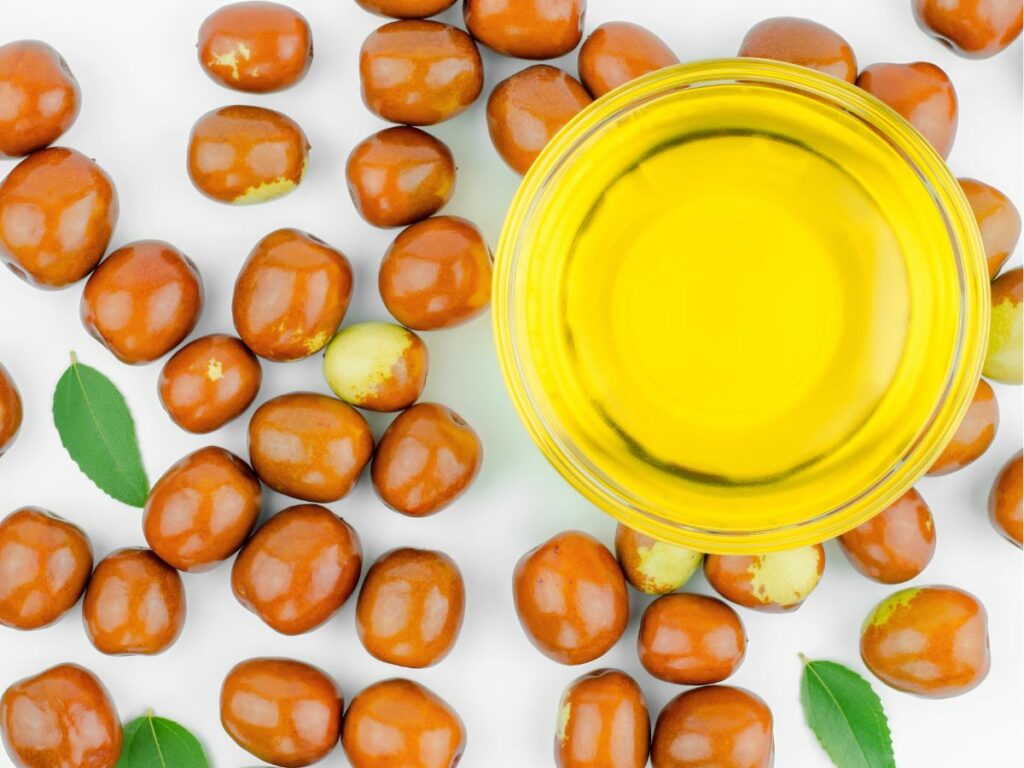
Hyaluronic Acid
This powerful hydrating agent can hold up to 1000 times its weight in water, ensuring deep and effective moisturization. It’s especially beneficial for aging skin, helping to retain a youthful and plump appearance. Hyaluronic acid’s intensive moisturizing properties make it a high-value ingredient in premium hand washes. Moreover, its ability to improve skin texture makes it a popular choice for those seeking smoother, softer hands.
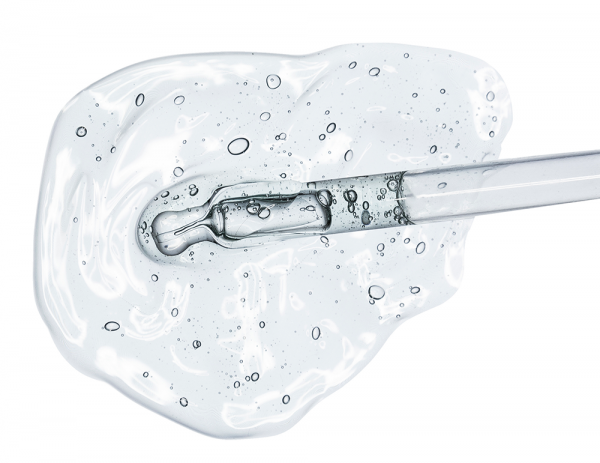
3. Thickeners and Stabilizers
Thickeners and stabilizers are key in hand wash formulations, ensuring the ideal texture and consistency for a perfect user experience. Below are the common thickeners and stabilizers used in hand wash formulations:

Cellulose Gum
Widely used for its thickening properties, cellulose gum creates a smooth, gel-like consistency, enhancing the tactile experience of the hand wash. Its natural origin makes it a favorable choice for eco-conscious brands. For example, in organic or natural hand washes, a small amount of cellulose gum can significantly improve texture without compromising the product’s eco-friendly credentials.
Xanthan Gum
A natural thickener, xanthan gum provides stability under various temperatures and pH levels, making it versatile for different formulations. It also helps in achieving a consistent and uniform texture in hand washes. Its ability to enhance product stability while maintaining a natural ingredient profile is invaluable. It’s often preferred for its gluten-free and hypoallergenic properties, making it suitable for a wide range of users.
Carbomer
Used for thickening and stabilizing, carbomer helps create a rich, luxurious texture in hand wash. It also aids in forming the hand wash into a gel-like consistency, which is appealing to many consumers. Its synthetic nature allows for precise control over the product’s viscosity. This control is essential in customizing the feel of the hand wash to meet specific consumer preferences.
Acrylates Copolymer
This stabilizer ensures even particle distribution and prevents separation in the formulation. It’s effective in enhancing the hand wash’s shelf life and maintaining its quality over time. Acrylates copolymer’s role in preserving the integrity of the hand wash is a key factor in product formulation. As a cosmetic expert, I value acrylates copolymers for its vital role in keeping our hand washes consistent and high-quality over time.
Guar Gum
Derived from guar beans, guar gum provides a smooth, creamy consistency, enhancing the hand wash’s feel. Its biodegradability and natural source make it a popular choice for sustainable product lines. It is celebrated for its gentle impact on the environment and its efficacy in hand wash formulations. Its compatibility with a variety of other ingredients also makes it a versatile choice in creating diverse hand wash textures.
4. Fragrance and Color
Fragrance and color are key in hand washes, enhancing appeal and sensory experience, and must align with brand identity and consumer preferences. Below are the fragrances and colors used in hand wash formulations:

Essential Oils
Lavender and citrus essential oils are popular for their natural fragrances, offering soothing or refreshing sensory experiences. They are often chosen for their therapeutic properties, contributing to a sense of relaxation or invigoration during hand washing. As a cosmetic expert, I’ve seen firsthand how these essential oils can turn a simple hand wash into a delightful, aromatic journey.
Synthetic Fragrances
Capable of replicating a wide array of scents, synthetic fragrances range from floral to oceanic, offering flexibility in creating unique scent profiles. They are key in customizing hand wash fragrances to suit diverse consumer preferences and market trends. Synthetic fragrances also provide long-lasting scent retention, ensuring the fragrance endures throughout the day.
Natural Colorants
Ingredients like beetroot extract or chlorophyll provide gentle coloring, making them a favored choice for their natural and non-toxic properties. These colorants are especially appealing in organic or all-natural product lines, aligning with eco-friendly brand values. TY Cosmetic prioritizes these natural colorants to ensure their products are safe and align with their commitment to sustainability.
Synthetic Dyes
Offering a spectrum of vibrant and consistent colors, synthetic dyes are crucial for achieving the desired visual appeal in hand washes. They allow for creative and brand-specific coloration, enhancing the product’s shelf presence and consumer appeal. These dyes are also stable under various storage conditions, maintaining their color intensity over time.
Fragrance-Free Options
Designed for sensitive skin, fragrance-free hand washes eliminate potential irritants, focusing purely on cleansing effectiveness. This option is essential for allergy-prone or health-conscious consumers, prioritizing skin safety and comfort. Additionally, these formulations often emphasize skin-friendly ingredients to enhance the cleansing experience.
5. pH Adjusters
pH adjusters in hand washes ensure compatibility with skin’s pH, minimize irritation, and enhance overall product performance. Below are the common pH adjusters used in hand wash formulations:

Citric Acid
Often used to lower the pH, making the product more acidic and closer to the skin’s natural pH. It is naturally derived and widely regarded for its gentle action on the skin. Citric acid not only balances the pH but also acts as a mild preservative, enhancing the product’s shelf life. This dual role makes it a highly valued ingredient in creating skin-friendly hand washes.
Sodium Hydroxide
Utilized to raise the pH level, particularly in too acidic formulations. It’s crucial for ensuring the hand wash is neither too acidic nor too alkaline, promoting skin comfort. Sodium hydroxide also helps in maintaining the effectiveness of other ingredients in the formulation. Its precision in pH adjustment is essential for the overall balance of the hand wash.
Lactic Acid
A mild pH adjuster offering moisturizing benefits, making it ideal for skin-friendly formulations. Its ability to gently exfoliate and hydrate the skin adds additional value to hand washes. Lactic acid is especially suited for products aiming to provide a soothing and hydrating washing experience. This makes it a preferred choice for formulations targeting dry and sensitive skin types.
Potassium Hydroxide
Used in small amounts to adjust the pH, particularly in liquid soap formulations. It effectively modifies the pH without altering the soap’s fundamental properties. Potassium hydroxide is known for its efficiency in saponification processes, contributing to a smooth and clear final product. Its role in enhancing the texture and clarity of hand washes is significant for product appeal.
Phosphoric Acid
Effective in fine-tuning the pH level, ensuring the final product is safe and comfortable for skin use. It provides precise control over the product’s acidity, crucial for sensitive skin formulations. Phosphoric acid is also beneficial in stabilizing the texture and appearance of the hand wash. In my experience, phosphoric acid is a key player in perfecting a hand wash’s feel and performance on the skin.
6. Exfoliants
Exfoliants in hand washes effectively remove dead skin cells for smoother skin and deep cleaning, while being gentle to prevent irritation. Below are common exfoliants used in hand wash formulations:

Jojoba Beads
These smooth, biodegradable beads gently exfoliate without harming the skin or the environment. They are a popular choice in eco-friendly formulations, providing a sustainable option for physical exfoliation. They are non-allergenic, making them suitable for all skin types, including sensitive skin. In my experience, jojoba beads are a fantastic choice for those who want effective exfoliation while being mindful of the environment.
Ground Walnut Shells
As a natural exfoliant, ground walnut shells effectively remove dead skin cells, making them suitable for more robust cleansing. They provide a textured feel that many consumers find satisfying in exfoliating hand washes. However, their abrasive nature requires careful formulation to ensure they do not irritate the skin. Additionally, walnut shells are biodegradable, making them an environmentally responsible choice for exfoliation.
Pumice
Finely ground pumice stone, known for its abrasive properties, is ideal in hand washes aimed at removing heavy dirt and grime. It is especially useful in formulations targeted for gardeners, mechanics, or others who frequently work with their hands. Pumice’s natural origin also adds to the appeal for consumers looking for organic or natural skincare products.
Synthetic Microbeads
Although their use has declined due to environmental concerns, synthetic microbeads are sometimes used for their uniform shape and size, offering consistent exfoliation. They are often found in specialized hand washes where precision exfoliation is required. However, the cosmetic industry is increasingly moving towards more environmentally friendly alternatives.
Natural Sugar Crystals
Gentle on the skin and easily dissolvable, natural sugar crystals are suitable for mild exfoliation in hand washes. They provide a gentle scrubbing action, ideal for everyday use without stripping the skin of its natural oils. Sugar crystals are also a natural source of glycolic acid, which helps to rejuvenate the skin. Furthermore, their solubility prevents any harsh abrasion, making them perfect for sensitive skin types.
7. Unique Additives
Unique additives in hand wash formulations bring a distinct edge to the product, differentiating it from standard offerings in the market. Below are some unique additives commonly found in hand wash formulations:
Vitamin E
Known for its antioxidant properties, Vitamin E helps protect the skin from environmental stressors and is often added for its skin-nourishing benefits. Its moisturizing effects also aid in keeping the skin supple and healthy, making it a popular choice in premium hand wash formulations. Its ability to support skin repair and rejuvenation is highly valued in skincare products.
Tea Tree Oil
Recognized for its antimicrobial properties, tea tree oil is a popular additive in hand washes focused on providing additional cleansing benefits. It not only helps in reducing bacteria but also leaves a refreshing scent, making the hand washing experience more pleasant. From my perspective, the inclusion of tea tree oil is key for hand washes that aim to offer both hygiene and a refreshing sensory experience.
Beads with Encapsulated Fragrance
These innovative beads burst during use, releasing fragrance and adding a unique sensory experience to the hand washing routine. They provide a surprising element of delight and can be formulated to match the fragrance theme of the hand wash. These beads also serve as a visual indicator of the hand wash’s unique properties, enhancing its appeal on the shelf.
The table below explores the innovative concept of beads with encapsulated fragrance in hand wash products, highlighting how they contribute to an enhanced sensory experience, align with fragrance themes, and serve as a visual indicator to boost the product’s appeal.
| Feature of Encapsulated Fragrance Beads | Description | Impact on Hand Wash Products |
| Bursting Sensory Experience | Beads designed to burst during hand washing, releasing a concentrated fragrance that enhances the sensory experience. | Enhances User Experience: The burst of fragrance upon use provides a delightful and surprising element, making the hand washing routine more enjoyable and memorable. |
| Thematic Fragrance Formulation | Ability to formulate the beads’ fragrance to align with the overall scent theme of the hand wash. | Ensures Product Consistency: Matching the fragrance of the beads with the hand wash ensures a cohesive and harmonious scent experience, appealing to consumers’ olfactory preferences. |
| Visual Appeal and Indication | The presence of these beads in the hand wash can serve as an attractive visual element, indicating the product’s unique properties. | Boosts Shelf Appeal: Visually distinctive beads can make the hand wash stand out on the shelf, attracting consumers and highlighting its special features. |
Thermal Activated Color Changers
Additives that change color in response to temperature add a fun and interactive element to the hand wash. This feature can be especially appealing to children, making hand washing an engaging activity. The visual transformation also serves as a novel way to encourage thorough hand washing, especially in public settings.
Aromatherapy Essences
Additives like lavender or chamomile offer calming aromatherapy benefits, enhancing the hand washing experience beyond basic cleansing. These essences are known for their ability to promote relaxation and well-being, making the hand wash experience more spa-like. Incorporating these essences can create a point of difference for brands focusing on wellness and self-care in their product lines.
Dive Deeper Into Our Resources
Interested in discovering more? Gain instant access to our diverse range of products:
Still haven’t found what you’re looking for? Don’t hesitate to contact us. We’re available around the clock to assist you.
Conclusion
This guide to the key ingredients in hand wash formulations offers insights into creating products that are both effective and appealing. By understanding these components, businesses can tailor their hand washes to meet specific customer needs and market trends.
Looking to elevate your hand wash product line with expertly chosen ingredients? TY Cosmetic is your go-to partner. For more information and collaboration opportunities, feel free to contact us.





















